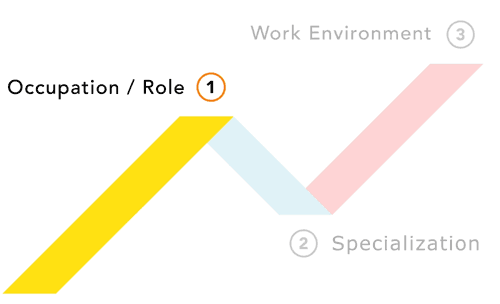No published book is free of mistakes. For a broader audience, errata are regularly published on this page as well as with the corresponding chapter within ISCN Online and as a Free Access article in the Karger Journal Cytogenetic and Genome Research.
Join Us now!
ISCN Online flags and corrects errata almost in real time and in their direct context. Same goes for addenda which will only remain part of the online version.
If you're not part of ISCN Online, don't miss out and join us now!
JOIN NOW START A FREE TRIAL
3 Symbols, Abbreviated Terms, and General Principles
| upd | Uniparental disomy (8.4, 14.2.1) |
| upd | Uniparental disomy (See hmz 14.2.6) |
8 Numerical Chromosome Abnormalities
8.3 Autosomal Abnormalities
48,XY,+21c,+21 An acquired extra chromosome 21 in a patient with Down syndrome.
46,XY,+21c,–21 Acquired loss of one chromosome 21 in a patient with Down syndrome.
48,XY,+21c,+21[10] An acquired extra chromosome 21 in a patient with Down syndrome.
46,XY,+21c,–21[10] Acquired loss of one chromosome 21 in a patient with Down syndrome.
View Chapter Online9 Structural Chromosome Rearrangements
9.1 General Principles
46,XX,inv(3)(q21q26.2) An inversion of one chromosome 3. There is no need to indicate that one chromosome 3 is missing, i.e., the karyotype should not be written 46,XX,–3,+inv(3).
46,XX,inv(3)(q21q26.2) An inversion in one chromosome 3 replacing one normal chromosome 3 homologue. There is no need to indicate that one normal chromosome 3 is missing i.e., the karyotype should not be written as 46,XX,-3,+inv(3). In a neoplasia setting, cell numbers are added i.e. 46,XX,inv(3)(q21q26.2)[10]
View Chapter Online9.2.1 Additional Material of Unknown Origin
46,XY,add(12)(q13)
46,XY,add(12)(pter→q13::?)
Additional material of unknown origin replaces the segment 12q13qter.
46,XY,add(12)(q13)
46,XY,add(12)(pter→q13::?)
Additional material of unknown origin replaces the segment 12q13->12qter.
9.2.3 Derivative Chromosomes
47,XX,t(9;22;6)(q34;q11.2;p21),+der(22)t(9;22;6) A three-way translocation between chromosomes 9, 22, and 6 is present along with an additional derivative chromosome 22 from this three-way translocation.
47,XX,t(6;9;22)(p21;q34;q11.2),+der(22)t(6;9;22)
View Chapter Online46,XY,der(9)t(9;22)(q34;q11),+22,der(22;22)(22pter→22q11::9q34→9qter::9qter→9q34::22q11→22pter) An isochromosome for the derivative chromosome 22 generated by a t(9;22), i.e., an isochromosome for the long arm of a Ph chromosome. There are also two normal copies of chromosome 22 and the derivative chromosome 9 generated by a t(9;22).
47,XY,der(9)t(9;22)(q34;q11.2),+22,der(22;22)(22pter→22q11.2::9q34→9qter::9qter→9q34::22q11.2→22pter) An isodicentric chromosome generated from a der(22)t(9;22).
View Chapter Online53,XX,…,+der(?)t(?;9)(?;q22),+r,+mar,dmin
53,XX,…,+der(?)t(?;9)(?;q22),+r,+mar, >20dmin[20]
View Chapter Online9.2.5 Duplications
46,XX,dup(1)(p31p34)
46,XX,dup(1)(pter→p31::p31→p34::p31→qter) or dup(1)(pter→p34::p31→p34::p31→pter)
Duplication of the segment between bands 1p34 and 1p31, in reversed orientation relative to pter and qter. Note that only the detailed form will clarify the location of the duplicated segment.
46,XX,dup(1)(pter→p31::p31→p34::p31→qter) or dup(1)(pter→p34::p31→p34::p34→qter)
View Chapter Online9.2.8 Homogeneously Staining Regions
46,XX,der(1)ins(1;7)(q21;p21p11.2)hsr(1;7)(q21;p11.2)
46,XX,der(1)(1pter→1q21::hsr::7p11.2→7p21::1q21→1qter)
Insertion of the segment 7p21p11.2 into the long arm of chromosome 1 with breakage and reunion at band 1q21. The derivative chromosome also contains an hsr at the interface between the recipient and donor chromosomes. The hsr is located proximal to the segment inserted from chromosome 7.
46,XX,der(1)ins(1;7)(q21;p21p11.2)hsr(1;7)(q21;p11.2)
46,XX,der(1)(1pter→1q21::hsr::7p21→7p11.2::1q21→1qter)
46,XX,der(1)ins(1;7)(q21;p21p11.2)hsr(1;7)(q21;p21)
46,XX,der(1)(1pter→1q21::7p11.2→7p21::hsr::1q21→1qter)
Insertion of the segment 7p21p11.2 into the long arm of chromosome 1 with breakage and reunion at band 1q21. The derivative chromosome also contains an hsr at the interface between the recipient and donor chromosomes. The hsr is located distal to the segment inserted from chromosome 7.
46,XX,der(1)ins(1;7)(q21;p21p11.2)hsr(1;7)(q21;p21)
46,XX,der(1)(1pter→1q21::7p21→7p11.2::hsr::1q21→1qter)
Almost in Real Time
ISCN Online flags and corrects errata almost in real time and in their direct context.
9.2.9 Insertions
The symbol ins is used for insertions. The orientation of the inserted segment is indicated by the order of the bands of the inserted segment with respect to the centromere. For clarity, the use of the detailed form is recommended.
The orientation of the inserted segment is indicated by the order of the bands of the inserted segment from pter to qter.
View Chapter Online9.2.17.1 Reciprocal Translocations
46,XX,t(5;14;9)(q13q23;q24q21;p12p23)
46,XX,t(5;14;9)(5pter→5q13::9p12→9p23::5q23→5qter;14pter→14q21::5q13→5q23::14q24→14qter;9pter→9p23::14q21→14q24::9p12→9qter)
Reciprocal six-break translocation of three interstitial segments. The segment between bands 5q13 and 5q23 on chromosome 5 has replaced the segment between bands 14q21 and 14q24 on chromosome 14, the segment 14q21q24 has replaced the segment between bands 9p23 and 9p12 on chromosome 9, and the segment 9p23p12 has replaced the segment 5q13q23. The orientations of the segments in relation to the centromere are apparent from the order of the bands. The segments 9p23p12 and 14q21q24 are inverted.
46,XX,t(5;14;9)(q13q23;q24q21;p12p23)
46,XX,t(5;14;9)(5pter→5q13::9p12→9p23::5q23→5qter;14pter→14q21::5q13→5q23::14q24→14qter;9pter→9p23::14q24→14q21::9p12→9qter)
11 Neoplasia
11.1.4 Stemline, Sideline and Clonal Evolution
47,XX,inv(6)(p21q25),+12[17]/50,sl,–inv(6),+7,+8,+9,+mar[11]
47,XX,inv(6)(p21q25),+12[17]/50,idem,–inv(6),+7,+8,+9,+mar[11]
The inv(6) present in the stemline has not been found in the sideline with 50 chromosomes. The breakpoints in the inv(6) need not be repeated. Note that there is monosomy 6 in the sideline. If the sideline was disomic for chromosome 6 then it would be written:
50,sl,+6,–inv(6),+7,+8,+9,+mar[11] or 50,idem,+6,–inv(6),+7,+8,+9,+mar[11]
51,sl,+6,–inv(6),+7,+8,+9,+mar[11] or 51,idem,+6,–inv(6),+7,+8,+9,+mar[11]
View Chapter Online11.2 Modal Number
81<3n>,XXX,+X,+X,+X,+X,+X,+1,+1,+3,+3,+14,+14,+14,–15,+21 A tumor in a female shows 81 chromosomes but is reported relative to triploid since most chromosomes are trisomic and this is biologically significant for the disease in question, although the count is in the near-tetraploid range.
81<3n>,XXX,+X,+X,+X,+X,+X,+1,+1,+3,+3,+14,+14,+14,–15,+21[10]
View Chapter Online13 In situ Hybridization
13.2.1 Normal Signal Pattern
46,XX.ish 17p11.2(RAI1×2),21q21.3(D21S259/D21S341/D21S342×2) A normal female. The RAI1 locus on chromosome 17 and the Down syndrome critical region on chromosome 21 are both present in the normal copy number (two copies) as determined by ish with a locus-specific probe. All loci of the contig probe are listed.
46,XX.ish 17p11.2(RAI1×2),21q22.13(D21S259/D21S341/D21S342×2)
View Chapter Online13.2.3 Abnormal Signal Patterns with Multiple Probes
46,X,?i(Y)(p10).ish idic(Y)(q11)(DYZ3+,DYZ1–,DYZ3+) A presumed isochromosome for the short arm of Y was shown by ish to have two centromeres and no heterochromatin.
46,X,?i(Y)(p10).ish idic(Y)(q11.1)(DYZ3+,DYZ1–,DYZ3+) A presumed isochromosome for the short arm of Y was shown by ish to have two centromeres and no heterochromatin.
View Chapter Online46,XX[20].ish t(12;21)(p13;q22)(ETV6+,RUNX1+;RUNX1+,ETV6+)[5] Normal female chromosomes in an oncology sample which was also tested by metaphase FISH using a dual-fusion probe and found to have an ETV6-RUNX1 gene fusion from a cryptic reciprocal translocation between chromosomes 12 and 21.
46,XX[20].ish t(12;21)(p13;q22)(RUNX1+,ETV6+;RUNX1+;RUNX1+,ETV6+)[5]
View Chapter Online46,X,r(X).ish r(X)(p22.3q21)(KAL+,DXZ1+,XIST+,DXZ4–) A ring X was further defined by ish as containing the short arm marker KAL1, the X alpha-satellite DXZ1 and the XIST gene on the long arm. It does not include DXZ4 at Xq24.
46,X,r(X).ish r(X)(p22.3q21)(KAL1+,DXZ1+,XIST+,DXZ4–)
View Chapter Online47,XY,+der(4)t(4;11)(p34;q13),t(4;11)[20].ish der(4)(3′KMT2A+),t(4;11)(3′KMT2A+;5′KMT2A+,3′KMT2A–)[5] A male karyotype with a t(4;11) plus an extra copy of the der(4). There is a 3′KMT2A signal on both copies of the der(4). There is a 5′KMT2A signal on the der(11) component of the t(4;11).
47,XY,+der(4)t(4;11)(p34;q23),t(4;11)[20].ish der(4)(3′KMT2A+),t(4;11)(3′KMT2A+;5′KMT2A+,3′KMT2A–)[5]
View Chapter Online13.2.4 Abnormal Mosaic and Chimeric Signal Patterns with Single or Multiple Probes
ish 21q21.3(D21S259/D21S341/D21S342×3)[20]/21q21.3(D21S259/D21S341/D21S342×2)[30] A mosaic female with three chromosomes 21 present, each with a single copy of the Down syndrome critical region, in 20 of 50 metaphases analysed as determined by ish with a locus-specific probe. All loci of the contig probe are listed in the nomenclature.
ish 21q22.13(D21S259/D21S341/D21S342×3)[20]/21q22.13(D21S259/D21S341/D21S342×2)[30]
View Chapter Online13.3.3 Abnormal Interphase Signal Pattern
nuc ish(DXZ1,DYZ3)×1[34/50]/(DXZ1×1,DYZ3×0)[12/50]/(DXZ1×1,DYZ3×2)[6/50] One copy of X and one copy of Y in 34 of 50 nuclei, in addition to 12 nuclei with a single X and six nuclei with one X and two Y chromosomes. For determining the sex chromosome complement of an individual, an exception is made to include the normal complement of two sex chromosomes.
nuc ish(DXZ1,DYZ3)×1[32/50]/(DXZ1×1,DYZ3×0)[12/50]/(DXZ1×1,DYZ3×2)[6/50] One copy of X and one copy of Y in 32 of 50 nuclei, in addition to 12 nuclei with a single X and six nuclei with one X and two Y chromosomes.
View Chapter Online14 Microarrays
14.1 Introduction
Microarray-based chromosome analysis is principally an adjunct to traditional chromosome analysis and FISH; for prenatal and postnatal analysis, it has become the laboratory method of choice for definitive identification of chromosome abnormalities. It is increasingly used in cancer studies either as a stand alone test or in combination with FISH. Microarray nomenclature includes the genomic coordinates for banded chromosomes which are defined in the translation tables provided by NCBI (hg19/GRCh38, http://hgdownload.cse.ucsc.edu/goldenPath/hg19/database/cytoBand.txt.gz and hg38/GRCh38, http://hgdownload.cse.ucsc.edu/goldenPath/hg38/database/cytoBand.txt.gz). Platforms differ and evolve; coordinates provided reflect this and are provided only for guidance.
hg19/GRCh37, http://hgdownload.cse.ucsc.edu/goldenPath/hg19/database/cytoBand.txt.gz
View Chapter Online14.2.4 Multiple Techniques
46,X,der(Y)t(X;Y)(p22.33;q12).arr[GRCh37] Xp22.33(701_2,679,502)×3,Xp22.33p22.2(2,709,521_15,955,588)×2,Yq11.221q11.23(16,139,805_27,177,529)×0 Karyotype and microarray analyses show a single copy gain of the X chromosome from two regions of Xp and loss of the long arm of the Y chromosome, resulting from an unbalanced translocation between the short arm of the X chromosome and the long arm of the Y distal to Yq11.221. The two regions of Xp are shown separately because the gain of the pseudoautosomal region results in three total copies and the gain proximal to the pseudoautosomal region results in two total copies.
The array defines the Yq breakpoint as q11.221. As the karyotype is given, and the abnormal chromosome is known to be a der(Y), it should be written as:
46,X,der(Y)t(X;Y)(p22.33;q11.221).arr[GRCh37] Xp22.33p22.2 (701_15,955,588)×2,Yq11.221q11.23(16,139,805_27,177,529)×0
View Chapter Online14.2.5 Mixed Cell Populations and Uncertain Copy Number
ish mos del(2)(q11.2q13)(RP11-478D22–)[10]/2q12.1(RP11-478D22+)[25].
arr[GRCh38] 2q11.2q13(100982729_112106760)×1[0.4]
FISH and microarray analyses show a mosaic deletion in the long arm of chromosome 2. By microarray approximately 40% of cells have the deletion.
ish mos del(2)(q11.2q13)(RP11-478D22–)[10]/2q12.1(RP11-478D22x2)[25].
arr[GRCh38] 2q11.2q13(100982729_112106760)×1[0.4]
47,XY,+mar.ish der(2)(p11.2q13)(RP11-478D22+)[5]/2q12.1(RP11-478D22+)[25].arr[GRCh38] 2p11.2q13(90982729_112106760)×3[0.15] Microarray and FISH analyses demonstrate a mosaic marker chromosome derived from chromosome 2. By microarray approximately 15% of cells have 3 copies of the defined region.
47,XY,+mar.ish der(2)(p11.2q13)(RP11-478D22+)[5]/2q12.1(RP11-478D22x2)[25].arr[GRCh38] 2p11.2q13(90982729_112106760)×3[0.15]
View Chapter Online14.2.7 Complex Array Results
arr 17p13.3q11.2(1,207,467_28,236,645)cha[0.5] Microarray analysis shows multiple changes of copy number, between 1 and ∼4, affecting most of the short arm of chromosome 17. Chromoanasynthesis was evident in approximately 50% of the sample.
arr[GRCh38] 17p13.3q11.2(1,207,467_28,236,645)cha[0.5]
View Chapter Online14.2.8 Polar Bodies
arr cht(13,14)×2,(18)×0,(21)×2 Polar body 2 has gain of one chromatid each for 13, 14 and 21, and has lost the chromatid 18 using microarray.
arr cht(13,14)×2,cht(18)×0,cht(21)×2
View Chapter Online15 Region-Specific Assays
15.2 Examples of RSA Nomenclature for Normal and Aneuploidy
rsa(X)×2,(13,18)×2,(21)×2∼3 Abnormal copy number result for chromosome 21 showing two to three copies for the whole chromosome 21 (mosaic trisomy) in a female using a region-specific assay. For clarity, the normal disomic states for chromosomes 13, 18, and X may be included in the nomenclature when tested.
rsa(X,13,18)×2,(21)×2∼3
View Chapter Online








